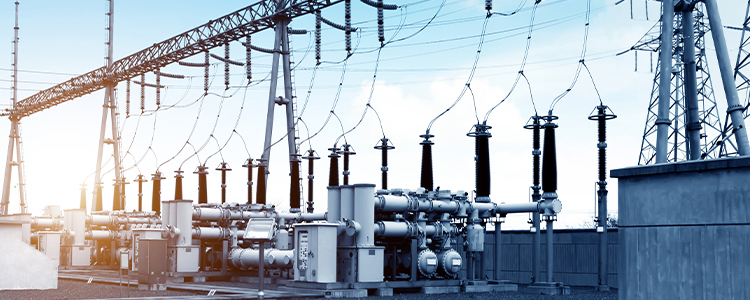- All
- Product Name
- Product Keyword
- Product Model
- Product Summary
- Product Description
- Multi Field Search


Views: 0 Author: Site Editor Publish Time: 2024-07-01 Origin: Site
When choosing between dry type transformers and oil-immersed transformers, it's essential to understand the differences in their design, applications, and advantages. Each type has unique characteristics that make them suitable for specific use cases.
· Insulation: Uses air or solid insulation materials (like epoxy resin) instead of liquid. Windings are often encapsulated in a resin or varnish.
· Cooling: Relies on natural air cooling (AN) or forced air cooling (AF).
· Enclosure: Typically enclosed in a ventilated or sealed metal casing.
· Insulation: Uses transformer oil for both cooling and insulation. The core and windings are immersed in the oil within a sealed tank.
· Cooling: Utilizes natural oil cooling (ONAN) or forced oil cooling (ONAF), with radiators and coolers.
· Enclosure: Contained in a robust oil tank that includes accessories like conservators and breathers.
· Fire Safety: No risk of fire from flammable liquids, making them safer for indoor use and locations with fire safety concerns.
· Environmental Impact: No oil means there's no risk of oil spills, leaks, or environmental contamination.
· Maintenance: Generally lower maintenance due to the absence of oil and related components.
· Fire Safety: Although mineral oil has high flash and fire points, making it less flammable, it can still pose a fire hazard under extreme conditions such as severe overheating or electrical faults.
· Environmental Impact: Risk of oil leaks and spills, which can lead to environmental contamination.
· Maintenance: Requires regular monitoring of oil quality and handling of oil leaks.
· Efficiency: Generally slightly lower efficiency due to air insulation and cooling limitations. Advanced designs, however, can achieve high efficiency.
· Temperature Tolerance: Effective for a range of temperatures but can be more sensitive to extreme conditions.
· Noise Level: Typically quieter due to the absence of oil cooling systems and the encapsulation of windings.
· Efficiency: Higher efficiency as oil provides superior cooling and insulation properties.
· Temperature Tolerance: Better suited for extreme temperature conditions due to the excellent cooling properties of oil.
· Noise Level: Can be noisier due to oil cooling systems and transformer design.
· Applications: Ideal for indoor use, commercial buildings, hospitals, schools, and environmentally sensitive areas.
· Installation: Easier to install indoors due to the absence of oil and lower fire risk. Requires ventilation for cooling.
· Location: Suited for locations where space is limited or fire safety is a concern.
· Applications: Commonly used in outdoor settings, industrial facilities, power generation, and high-voltage transmission networks.
· Installation: Typically installed outdoors or in dedicated transformer rooms due to the risk of oil leaks and fire.
· Location: Suited for applications where high efficiency and robust cooling are critical.
· Initial Cost: Generally higher due to more complex insulation materials and manufacturing processes.
· Operational Cost: Lower maintenance costs but potentially higher operational costs in terms of efficiency and cooling requirements.
· Longevity: Comparable lifespan but may vary depending on operating conditions and maintenance.
· Initial Cost: Typically lower due to simpler construction and materials.
· Operational Cost: Regular maintenance and monitoring of oil quality can increase operational costs.
· Longevity: Often longer lifespan due to superior cooling and insulation properties.
Aspect | Dry Type Transformers | Oil-Immersed Transformers |
Insulation | Air or solid (e.g., epoxy resin) | Transformer oil |
Cooling | Natural or forced air cooling | Natural or forced oil cooling |
Fire Safety | Higher (no flammable liquids) | Moderate (mineral oil is less flammable but still poses a hazard) |
Environmental Impact | Lower (no risk of oil leaks) | Higher (risk of oil leaks) |
Maintenance | Lower (no oil) | Higher (requires oil monitoring) |
Efficiency | Slightly lower (air cooling limits) | Higher (oil cooling is more effective) |
Applications | Indoor, commercial, environmentally sensitive areas | Outdoor, industrial, high-voltage applications |
Installation | Easier indoors, requires ventilation | Typically outdoors or in dedicated rooms |
Cost | Higher initial cost, lower maintenance | Lower initial cost, higher operational maintenance |
Longevity | Comparable, varies with conditions | Often longer due to better cooling and insulation |
Choosing between dry type and oil-immersed transformers depends on specific application needs, safety requirements, environmental considerations, and cost factors. Dry type transformers are ideal for indoor and environmentally sensitive locations due to their enhanced safety and lower environmental impact, while oil-immersed transformers excel in outdoor and high-voltage applications due to their superior efficiency and cooling capabilities.
content is empty!
content is empty!